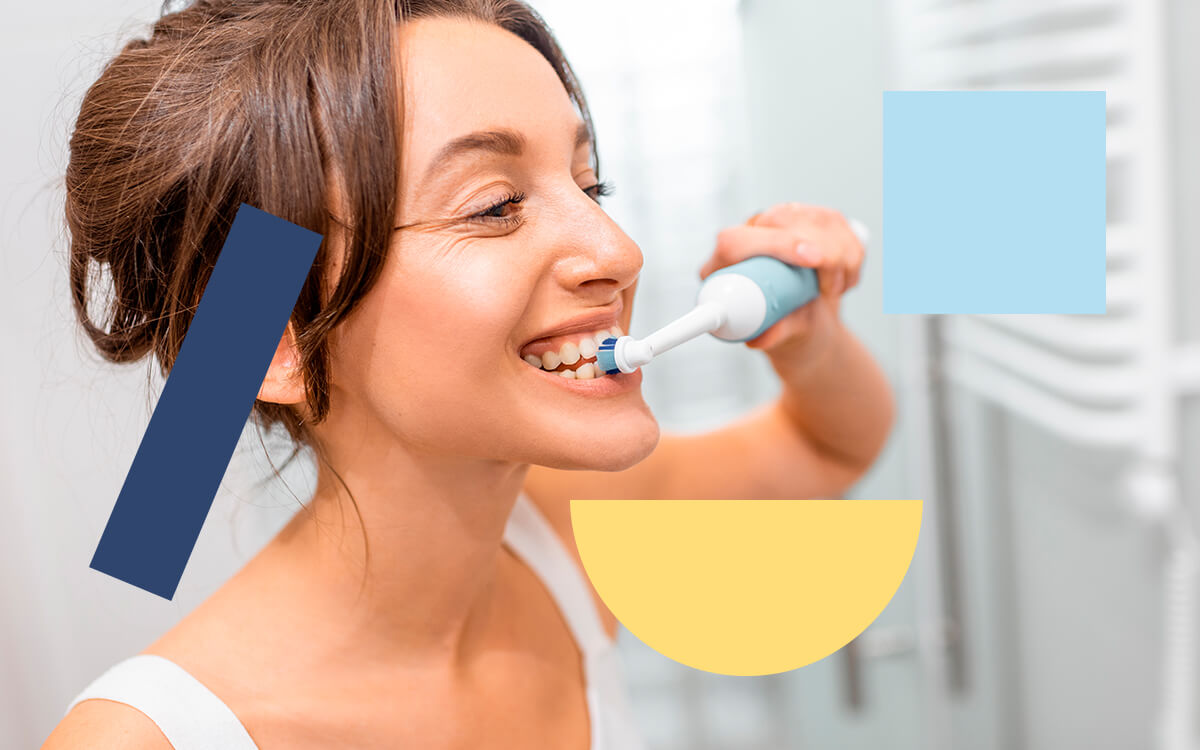 Oral health
Oral health
What to consider when choosing the best electric toothbrush?
In order to ensure proper oral hygiene, today there are multiple types of toothbrushes to choose from. If you also want to...

Pulpitis is an inflammatory process of the dental pulp that, in popular jargon, is called "inflammation of the nerve of the tooth".
It is one of the most frequent causes of toothache, which usually appears due to dental caries. Pain is the main symptom of pulpitis, whose intensity - from mild to moderate - is accentuated when the tooth is subjected to thermal (cold/heat), chemical (sweets and sugars) or mechanical (chewing) stimuli.
The treatment of pulpitis consists of minimizing the symptoms (pain) and eliminating the cause responsible for the inflammatory process. The treatment of pulpitis is relatively simple; however, when the inflammation is not carefully treated, the tooth may undergo a degenerative-necrotic process (lose its vitality). In such circumstances, pulpitis requires devitalization, partial removal of the pulp or extraction of the tooth.
Pulpitis is a dental disease characterized by inflammation of the dental pulp.
Early intervention by the dentist with experience in the treatment of this disease of the oral cavity could halt the course of acute pulpitis, preventing the disease from becoming chronic and causing pulp necrosis as an unfortunate consequence.
The dental pulp is a soft tissue composed of arterioles, venules, nerves and special cells called odontoblasts, capable of producing dentin, one of the hard tissues that make up the tooth.
The starting point and main cause of pulpitis, a condition that can be very painful, is a microbial infection that usually comes from a caries lesion or a periodontal lesion affecting the apex of the tooth that extends to the dental pulp. Other causes of pulpitis can be dental fractures that expose the pulp to bacteria, but also chronic dental trauma such as, for example, those caused by bruxism (the habit of grinding the teeth while sleeping) or malocclusions that cause unbalanced chewing. Finally, excessive thermal stimuli, especially cold, can also initiate pulpitis, which in most cases will be temporary and reversible.
Pulpitis is often the immediate consequence of cariogenic damage. Caries is a process of tooth destruction that causes progressive demineralization of enamel and dentin. The microorganisms present in the oral cavity, hungry for sugars, produce acidic substances from the fermentation of carbohydrates, and it is these acidic products that perforate the enamel, reaching the dentin and damaging the pulp of the tooth to trigger pulpitis.
It is not uncommon for the symptoms of pulpitis to go unnoticed for a long time, therefore, it is advisable to have regular check-ups with the dentist in order to intervene in time.
The pain is usually difficult to localize and particularly intense, often accompanied by the sensation of a throbbing tooth, this being the most evident symptom of the pathology. Pulpitis pain increases during chewing, consumption of sugary foods and exposure to temperature changes.
Pulpitis, depending on the depth of the lesion and the level of inflammation, can manifest itself in two different ways: reversible pulpitis and irreversible pulpitis. In the first case, the inflammation is mild to moderate and the carious lesion is usually on the enamel or dentin surface. In this case, the sensation of pain is aggravated when the tooth is subjected to an external stimulus such as, for example, too cold or sugary food, but disappears instantly as soon as the stimulus is removed.
In this form of pulpitis, immediate intervention and appropriate treatment leads to complete recovery from the disease.
Irreversible pulpitis, on the other hand, occurs when the inflammation is severe, with a high risk of progressing to pulp necrosis. In these cases, it is common to see that the pathology is accompanied by periodontitis or abscesses. In this case, unlike the previous one, the pain does not cease once the stimulus is removed, but lasts for several minutes.
In some cases it can also occur spontaneously and the patient struggles to locate the tooth that causes pain, confusing the mandibular and maxillary arches. The toothache may extend to the ear, temple, face and neck in a deep and continuous manner. The supine position, which brings more blood to the affected area, makes the pain even more acute, making it difficult to sleep.
A "shock" treatment is indispensable to prevent pulpitis from progressing to its irreversible form.
The treatment of pulpitis is based on:
First, pain can be controlled by the administration of analgesic drugs that can mask the symptoms and provide relief to the patient. While paracetamol and NSAIDs are usually sufficient to effectively relieve mild to moderate pain, codeine or other opioids are necessary in cases of severe and unbearable pain.
In addition to the pharmacological treatment, the dentist performs a medical treatmentwhich consists of a specific intervention for eliminate the cause of pulpitis. When pulp involvement is limited, pulpitis is treated by simply removing the caries. On the other hand, in the presence of severe inflammation and pulp necrosis, pulp removal may be necessary. partial or total removal of the tooth pulp (devitalization or eventual extraction of the tooth).
The best treatment for pulpitis is prevention. Since most pulpitis is a consequence of cariogenic processes, simpledietary precautions, combined with the correction of an unhealthy lifestyle, can prevent the occurrence of pulpitis.
To minimize the risk of pulpitis, it is necessary to take care of your teeth on a daily basis:
Have regular check-ups at the dentist, at least once or twice a year. Routine visits can detect at the root any asymptomatic inflammatory process, including pulpitis, and remedy it before the damage becomes irreversible.
The main cause of pulpitis is dental caries. Initially, through the acids produced by bacteria, the enamel, the outermost part of the tooth, begins to demineralize.
Pulpitis can be reversible or irreversible. In reversible pulpitis, the pulp is not necrotic, a cold stimulus or soft causes pain that usually lasts 1 or 2 seconds, and repair requires only a bur and a filling.
The first remedy to relieve pulpitis pain is to resort to analgesic drugs based on paracetamol or other NSAIDs, which are only useful in cases of mild or moderate pain.
 Oral health
Oral health
In order to ensure proper oral hygiene, today there are multiple types of toothbrushes to choose from. If you also want to...
 Orthodontics
Orthodontics
In the days following the start of orthodontic treatment, it is very common to experience certain discomfort and pain that will gradually disappear. However...
It is one of the most frequent causes of toothache, which usually appears due to dental caries. Pain is the main symptom of...